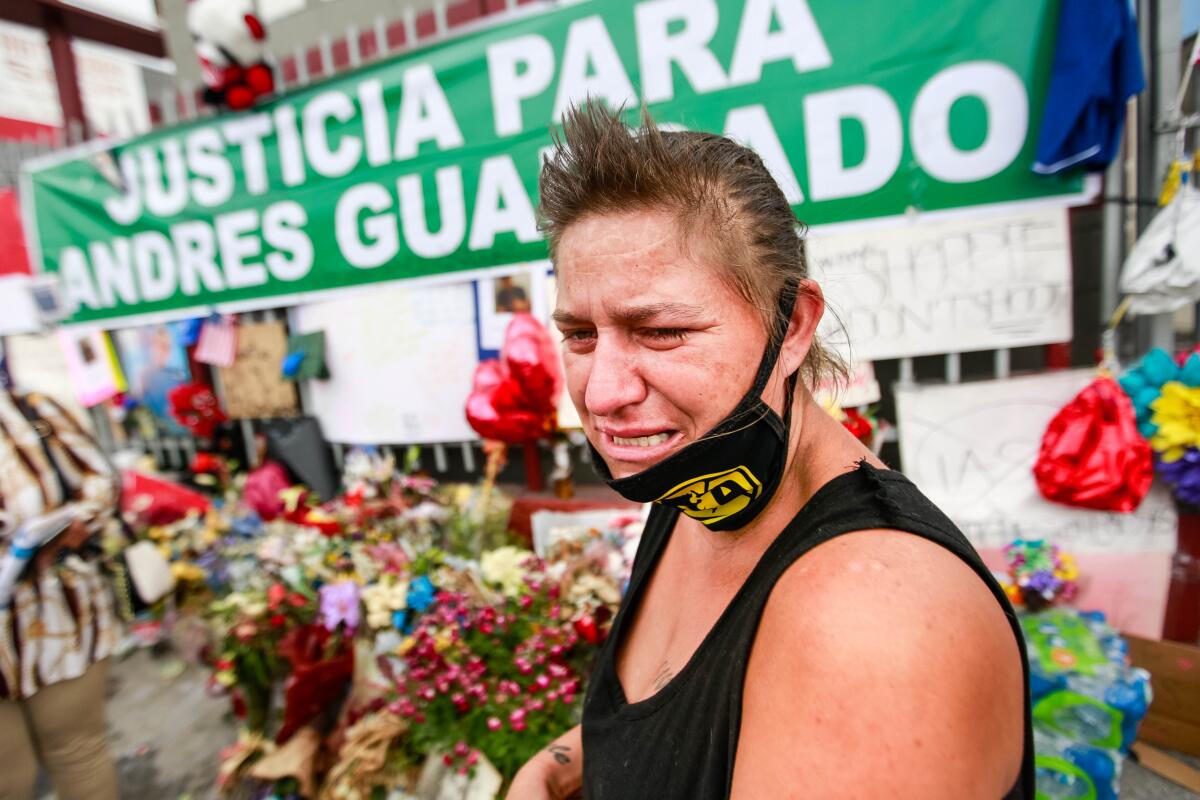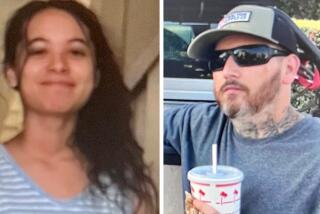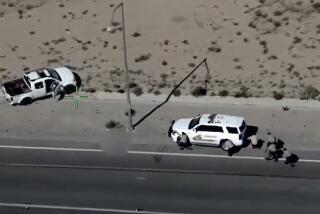Questionable tactics by deputies in Andres Guardado killing put pressure on sheriff

Andres Guardado had surrendered and was lying facedown on the ground when a Los Angeles County sheriffâs deputy who had been chasing him down a driveway holstered his weapon and approached the 18-year-old to put him in handcuffs, the deputy would recount.
Suddenly, according to this account, Guardado reached for the gun heâd moments before agreed to drop, which was still on the ground above his right hand, prompting the deputy to redraw his weapon. The deputy fired six rounds, five of which struck the teenager in the back, killing him.
The narrative of Deputy Miguel Vega, provided to The Times through his attorney, raises fresh questions about the tactics used during yet another deadly police encounter that has garnered national attention and prompted large demonstrations by activists and Guardadoâs relatives, who called the shooting unjustified.
Experts questioned several aspects of the incident, including what kind of cover Vega had from his partner and why Vega didnât first secure the weapon or order Guardado to move away from it.
âIf that individual is able to reach for the gun, why are you holstering your weapon? Unless your cover officer is there in a position to protect you,â said Ed Obayashi, a Plumas County deputy sheriff and national expert in use of force. âThat is officer safety 101.â
Law enforcement tactics, especially the use of deadly force, are under intense scrutiny after a string of high-profile killings at the hands of police, including the death in Minneapolis police custody of George Floyd, who was pinned to the ground by his neck in an episode that has sparked nationwide unrest. Lawmakers are increasingly proposing measures to limit when police can use deadly force.
Some police agencies have also been trying to hold officers more accountable for their actions when using force, including questioning whether unsound tactics contributed to the violence. The Los Angeles Police Department, for example, now evaluates officers on whether they could have resolved an encounter without firing their weapons.
In California, Assembly Bill 392 created what some described as one of the toughest standards in the nation for when law enforcement officers can kill, requiring that deadly force be used only when ânecessary,â instead of when âreasonable.â The law â pushed in the wake of the 2018 police shooting death of Stephon Clark â also prohibits police from firing on fleeing felons who donât pose an immediate danger, an update from Californiaâs original code, which dates back to 1872.
Clark was shot at 20 times by two Sacramento police officers who said he was holding what they thought was a firearm. Only a cellphone was found at the scene.
Sheriff Alex Villanueva did not respond to questions about whether the deputiesâ tactics in the Guardado case conformed to department standards.
Adam L. Marangell, an attorney representing Vega, said an analysis of his clientâs tactics is best reserved for the administrative investigation conducted by the departmentâs internal affairs bureau after the homicide investigation concludes. Vega is scheduled to provide an interview to investigators on Monday, he said.
âI do believe Deputy Vega acted in accordance with policy and in the safest possible manner given the dynamic situation he faced,â Marangell said.
Disregarding a âsecurity holdâ invoked by the Sheriffâs Department, the coronerâs office Friday released Guardadoâs autopsy report, confirming that the 18-year-old was shot five times in the back. Attorneys for the Guardado family earlier this week released the results of an independent autopsy that drew the same conclusion.
âI have given careful consideration to the major variables in this case â supporting the administration of justice, as well as the publicâs right to know,â Chief Medical Examiner-Coroner Dr. Jonathan Lucas said in a statement. âI do not believe that these are mutually exclusive ideals. Both are important, particularly amid the ongoing national discussion about race, policing and civil rights. I believe that government can do its part by being more timely and more transparent in sharing information that the public demands and has a right to see.â
Villanueva blasted the disclosure, saying it has âthe potential to jeopardize the investigation, the filing of the case and any possible future criminal or administrative proceedingsâ and would force the Sheriffâs Department to use court orders to enforce security holds that exist to prevent tainting witness interviews.
âDr. Lucas has acknowledged succumbing to pressure from the Board of Supervisors and the Office of Inspector General and has now made the astonishing admission that he sacrificed the integrity of the investigation in a bid to satisfy public curiosity,â Villanueva said in a statement.
The encounter began just before 6 p.m. on June 18, when Vega and his partner, Christopher Hernandez, saw Guardado speaking to someone in a car blocking the entrance to an auto body shop on West Redondo Beach Boulevard, the Sheriffâs Department has said.
Investigators said Guardado looked toward the deputies, âproduced a handgunâ and ran away. The deputies gave chase, and when they caught up, Vega fired.
Tom Yu, an attorney representing Hernandez, said his client saw a gun in Guardadoâs waistband and, at some point during the chase, the 18-year-old pulled it out. Yu said his client saw Guardado turn a corner and begin to lie on the ground, when the deputy heard Vega order Guardado to drop the gun. Then Hernandez heard gunfire, Yu said.
At that point, Hernandez had only a partial view of Guardado, Yu said.
Yu said Friday that it was unfair for experts âto second-guess what these deputies were doing in a split-second-decision situation.â
Marangell said Vega gave multiple commands to Guardado to stop during the chase, during which Guardado pulled out the gun. He said Guardado then obeyed commands to stop, turned around and raised both hands, while still armed.
Guardado was ordered to place the firearm on the ground, which he did, Marangell said. Guardado then positioned himself facedown on the ground, but the gun was near his right hand, Marangell said.
As Vega approached with his weapon holstered, he told Guardado: âDonât reach for the gun,â Marangell said. Thatâs when Guardado tried to grab the gun, he said.
Obayashi said shooting someone in the back or using bad tactics does not necessarily mean the force was unjustified. A suspect could be running away while firing at officers behind him, or could have been spun around by the impact of the gunfire in the middle of a shooting.
âIn this case, the deputy fired ... his weapon knowing that he was aiming at the subjectâs back,â Obayashi said. âThat is unusual.â
âThereâs going to be a lot of questions, based on what Iâm reading, on tactics,â he added. âDid it have to wind up this way?â
Sid Heal, a former L.A. County Sheriffâs Department commander and chairman of strategy and development for the National Tactical Officers Assn., said he was troubled by Vegaâs description of Guardadoâs behavior in the seconds before his death.
âUp until now, everything youâve described is in compliance. It doesnât make sense, from a strictly logical standpoint, that something occurred to cause the defendant, the suspect, to break character. Heâs out of character,â Heal said. âIf heâs going to decide to fight, why put himself in such a position? At such a disadvantage?â
Heal said that while the public often panics at word of a suspect being shot in the back, law enforcement officers are trained to fire at whatever target presents itself in a deadly force situation. But Heal also questioned why deputies ordered the suspect to lay prone near the weapon he had just surrendered.
Questions about the validity of Vegaâs statement, as well as whether Guardado behaved in a way that might have caused the deputies to fear for their lives, will likely persist no matter the outcome of the investigation, because the Sheriffâs Department has yet to issue body-worn cameras to its deputies. Investigators said they have not recovered any video footage of the shooting.
âThereâs just a lot of loose ends here,â said Heal, who has long been critical of the departmentâs failure to outfit deputies with cameras. âWe could look at the body footage and find out what was going on. Itâs not definitive, but itâs certainly convincing.â
The Sheriffâs Department has said it will begin rolling out use of body cameras in October.
Eugene OâDonnell, a former police officer and prosecutor in New York City who now teaches at the John Jay College of Criminal Justice, disputed the notion that Guardadoâs alleged lack of compliance after first following orders was unusual, arguing that his surrender would not have been completed until he was handcuffed.
âThat is a huge piece of police work that itâs not over until itâs over,â OâDonnell said of Vegaâs actions while approaching Guardado. âThat could be the most dangerous time.â
He also said it was not abnormal for Vega to fire when his partner did not.
âThe blunt reality of policing is, if you send two officers to a call, one set of officers might shoot, and a different set of officers might not,â OâDonnell said. âYou canât over read it, because some of the cops are frankly afraid to shoot at this point.â
Poor tactics prior to a shooting are rarely enough to lead to criminal charges. In 2016, the Los Angeles County district attorneyâs office declined to prosecute Long Beach Police Officer Jeffrey Meyer for sticking his gun through a window and fatally shooting 19-year-old Hector Morejon, who was unarmed.
Meyer was responding to a trespassing call and, instead of waiting for a building employee to obtain a key for the apartment he was investigating, walked down an alley without his partner and failed to identify himself as an officer before pointing his weapon through a window. He shot Morejon in the back, believing he was armed, but no weapon was recovered.
Prosecutors determined that Meyerâs âtactical deficiencies were a substantial, if not the primary causeâ for Morejonâs death but said those failings did not rise to the level of criminal conduct since they had no independent evidence to counter Meyerâs narrative of the shooting.
More to Read
Sign up for Essential California
The most important California stories and recommendations in your inbox every morning.
You may occasionally receive promotional content from the Los Angeles Times.












